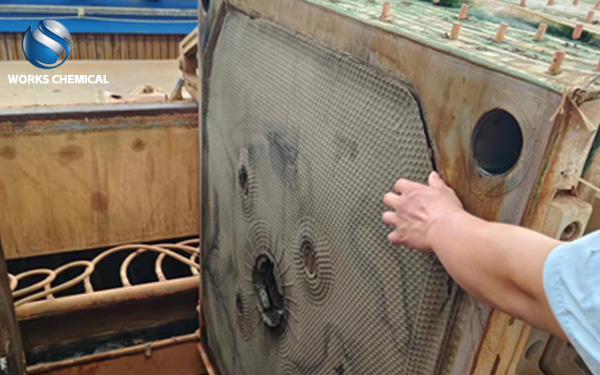
The common pain points in the process of sludge treatment mainly include the following aspects:

One. Dehydration difficulties caused by sludge properties
High content of colloidal substances: the sludge contains a large number of colloidal substances, such as proteins, polysaccharides, etc. These colloidal substances have strong water absorption and water retention, making the water between the sludge particles difficult to be removed by conventional mechanical dehydration methods.
Microbial cell impact: the microbial cells of the sludge contain a lot of water, and the cell wall has a certain toughness, resulting in the water in the cell is not easy to release. At the same time, the presence of microbial cells will also increase the viscosity of the sludge and further affect the dehydration performance.
Two, equipment operation and maintenance problems
Clogging and wear of filter cloth: fine particles, fibers and other substances in the sludge are easy to accumulate on the surface of the filter cloth, forming a layer of filter cake, preventing the passage of water. After a long period of operation, the clogging of the filter cloth will become more and more serious, resulting in a significant decrease in dehydration efficiency. At the same time, the filter cloth is also easy to wear during use and needs to be replaced regularly.
Improper device parameter Settings: Improper device parameter Settings, such as pressure and rotational speed, will affect the dehydration effect. For example, in the plate and frame filter press, if the pressure is set too low, it can not form an effective extrusion effect on the sludge; Too high pressure may cause damage to the filter cloth or equipment.
Equipment aging and failure: With the extension of the use time, the plate and frame sludge dewatering equipment may have aging, wear and other problems, resulting in reduced equipment performance and poor dewatering effect. In addition, equipment failures can also affect normal production operations.
Three. Energy consumption and cost issues
High energy consumption: The traditional plate and frame sludge dewatering equipment has high energy consumption during the working process, which increases the operating cost.
Expensive replacement of spare parts: Spare parts of the plate and frame sludge dewatering equipment such as filter cloth, filter plate, etc., are higher in price, and the replacement frequency is higher, which increases the maintenance cost.
Four. Complexity of operation and maintenance
Complicated operation: The operation process of the plate and frame sludge dewatering equipment is relatively complicated, and the operator needs to have certain professional knowledge and skills.
Maintenance difficulties: The maintenance work of the equipment is also relatively complex, requiring regular inspection, cleaning and maintenance. These tasks not only consume time and energy, but also may affect the normal operation of the equipment.
In view of the above pain points, the following measures can be taken to improve and optimize:
Improve sludge properties: through chemical conditioning, biological pretreatment and other methods to improve the dewatering performance of sludge, reduce the content of colloidal substances and the influence of microbial cells on dehydration.
Optimize the operation parameters of the equipment: according to the nature of the sludge and the actual operation situation, the parameter Settings of the dehydration equipment are reasonably adjusted, such as pressure, speed, etc., to improve the dehydration efficiency and the quality of the mud cake.
Strengthen equipment maintenance and maintenance: Perform regular performance testing and evaluation of the equipment to ensure that the equipment is operating in the best condition. At the same time, strengthen the maintenance and maintenance of the equipment to extend the service life of the equipment.
Adopt new dehydration technology: Consider the use of new dehydration technology or equipment, such as stacked sludge dewatering machine, high pressure filter press, etc., in order to improve dehydration efficiency and reduce energy consumption costs.
In summary, the dehydration of plate and frame sludge faces multiple pain points in the process of sludge treatment, but by taking corresponding measures to improve and optimize, the dehydration efficiency can be effectively improved and the operating cost can be reduced.